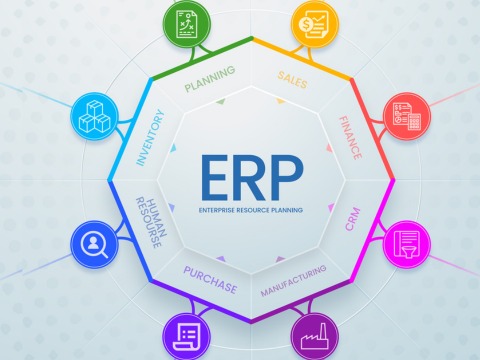SAP S/4HANA Migration: A Step-by-Step Guide to Shifting from SAP ERP to SAP S/4HANA


In order to stay competitive in the fast-paced business environment of today, organizations need to stay ahead of the game. A key aspect of this is ensuring that their enterprise resource planning (ERP) system is up-to-date and able to meet their evolving business requirements. SAP S/4HANA, the advanced ERP system by SAP, offers improved functionality, performance, and real-time analytics. This blog post will guide you through the process of transitioning from SAP ERP to SAP S/4HANA.
Before starting the migration process, it is crucial to evaluate your existing landscape. Thoroughly analyze your current SAP ERP system, considering customizations, interfaces, and add-ons. Identify any outdated functionalities that can be replaced with the built-in features of S/4HANA. This assessment will help you understand the extent and complexity of the migration process.
Based on the assessment, establish a migration strategy that aligns with your organization's objectives and timelines. Choose between a Greenfield or brownfield approach. Greenfield involves starting fresh with a new implementation, while brownfield involves converting your existing system to S/4HANA. When deciding on a strategy, take into account factors such as budget, resources, and business continuity.
Prepare a comprehensive project plan that outlines the tasks, timelines, and required resources for each phase of the migration. Ensure that you have a dedicated team with expertise in SAP technology. Develop a system landscape diagram that encompasses the development, quality assurance, and production systems. Additionally, establish a sandbox environment specifically for testing and training purposes.
If you opt for a brownfield migration, conduct the required system conversion activities. This involves preparing the system for conversion, executing the conversion process, and addressing any technical challenges that may arise. On the other hand, if you choose the Greenfield approach, initiate a fresh S/4HANA implementation and configure the system according to your specific business requirements.
Data migration plays a crucial role in the migration process. Begin by analyzing your existing data to identify what needs to be migrated to S/4HANA. Cleanse and transform the data to ensure its accuracy and integrity. Develop a data migration strategy and implement it using SAP tools or third-party solutions. To ensure the quality of the migrated data, perform thorough testing and validation.


Competencies of SAP HANA
Evaluate and adjust your custom code to ensure compatibility with S/4HANA. Utilize tools like SAP Readiness Check and Custom Code Migration Work list to identify any potential issues in your custom code. Update or replace outdated code with new S/4HANA functionalities. Conduct comprehensive testing to verify the functionality of the modified code.
Perform rigorous testing on your migrated system to ensure its stability, functionality, and performance. Conduct end-to-end testing of critical business processes to validate their seamless execution. Develop a comprehensive training plan to familiarize end-users with the new system's features and functionalities, enabling them to effectively utilize the system.
Once testing and training activities are finalized, prepare for the go-live phase. Execute the migration of your manufacturing system to S/4HANA, ensuring a seamless transition from your legacy ERP system. Offer post-migration support to promptly resolve any issues or challenges that may arise after the go-live stage.
After completing all testing and training activities, it is essential to plan for the go-live phase. Migrate your manufacturing system to S/4HANA to facilitate a seamless transition from your legacy ERP system. Additionally, ensure that post-migration support is available to promptly address any issues or challenges that may arise after the go-live stage.
"When you start with a dream and work with passion, success is inevitable."
Ratan Tata